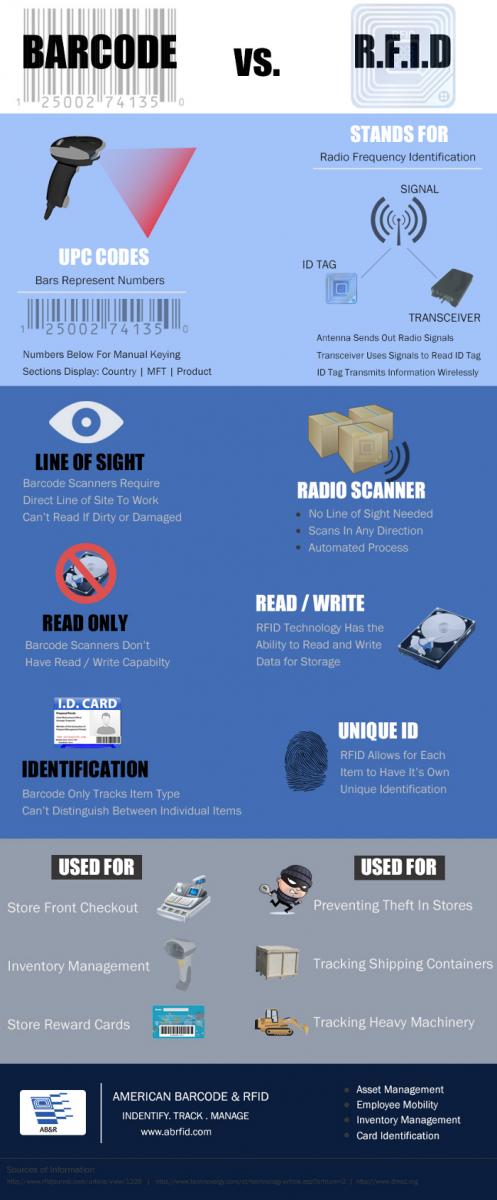Infographic: Barcode vs RFID
The first barcode patent was awarded in 1952 but wasn’t used commercially until 1966. A patent for RFID technology was awarded in 1983. But what are the real differences?
RFID may not necessarily be better than barcodes. Both are different technologies with different applications, which may sometimes overlap. In many cases, RFID offers advantages over the traditional barcode. The major difference between the two is that barcodes are line-of-sight technology. That is, a scanner has to “see” the barcode to read it, which means people usually have to orient the barcode towards a scanner for it to be read.
The advantage of RFID is that this technology doesn’t require line of sight. RFID tags can be read as long as they are within range of a reader. Barcodes have few other limitations too. If a label has ripped, soiled or fallen off, there’s no way to scan the article, and standard traditional barcodes can identify only the product and manufacturer, not the unique item. For e.g. the barcode for one milk carton is the same as every next one, which makes it impossible to know which one will pass its expiration date first.
American Barcode and RFID (AB&R) has created this handy Barcode vs RFID infographic to explain the two unique technologies.

Are you a diamond or jewellery merchant?
Diamond Technology Solutions can help you decide whether your company and its functions need to integrate Barcode and RFID in its processes. Our E-Jewel and Odin platforms have an inbuilt barcode printing functionality that helps you print tickets for your products as required and it can be integrated with any RFID systems.





